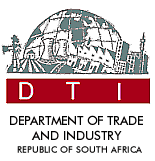
 |
Multicomputer Technology Initiative |
 |
 |
In addition, a high level simulation environment is required. In this environment, system level software should be prepared and tested with a high level of confidence that the target system will perform to specification. It is not required that the simulator would run in real time. To some extent, the flexible, scalable nature of a crossbar configuration allows errors of judgement in algorithm load to be accomodated.
This project has many of the requirements of the USA based initiative known as RASSP, and the many Beowulf initiatives around the world.
 The
project assumes that to meet the rapid prototyping requirement, that commercial
technology will be utilised. During 1998, a cluster
of 8, 350MHz Pentium class machines (one with a dual processor) was purchased,
and is now running Linux. A PBIL algorithm to design antenna arrays was
successfully tested using the PVM
(Parallel Virtual Machine) libraries. Work is now directed towards testing
some general purpose image processing algorithms specified by our sponsors.
During 1999, this work will continue, as well as looking at implementing
Message Passing Interface (MPI).
The
project assumes that to meet the rapid prototyping requirement, that commercial
technology will be utilised. During 1998, a cluster
of 8, 350MHz Pentium class machines (one with a dual processor) was purchased,
and is now running Linux. A PBIL algorithm to design antenna arrays was
successfully tested using the PVM
(Parallel Virtual Machine) libraries. Work is now directed towards testing
some general purpose image processing algorithms specified by our sponsors.
During 1999, this work will continue, as well as looking at implementing
Message Passing Interface (MPI).
Currently the eight machines are linked together with an 8 port, 100MHz EtherNet hub. During 1999, we will investigate using ATM network cards and router for linking the machines. It is anticipated that special management software will be utilised to ensure permanent ATM circuits between sub-clusters of the machines, to optimise performance for algorithms where significant inter-processor data flow needs to take place.